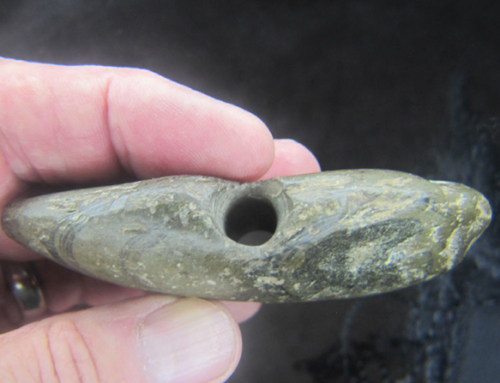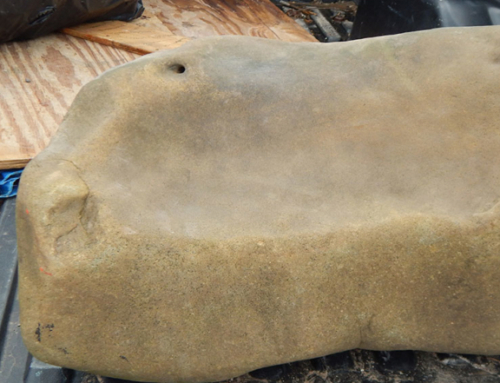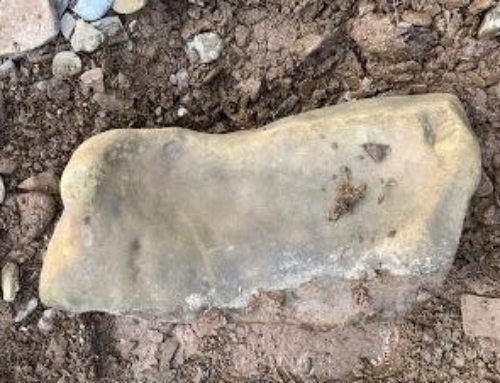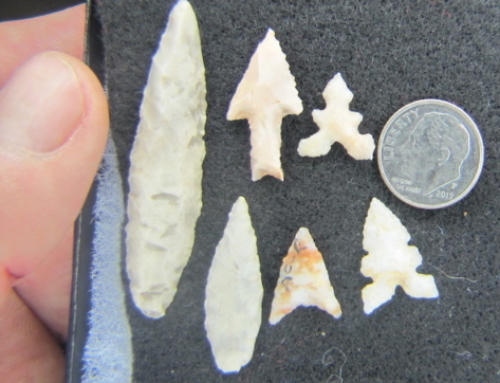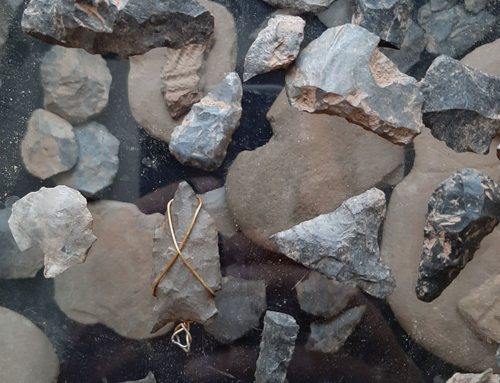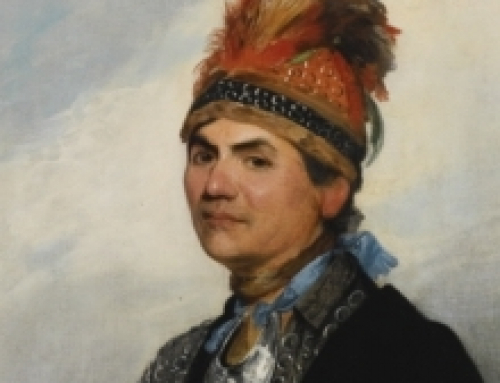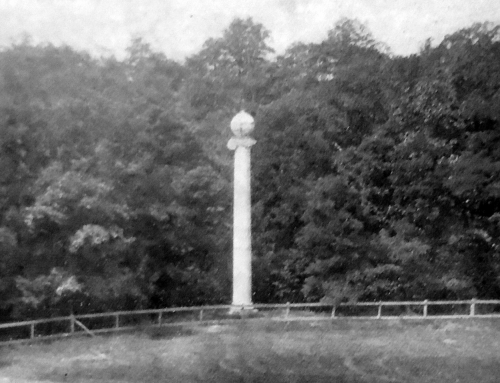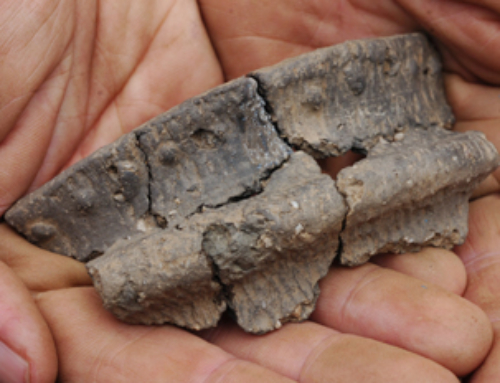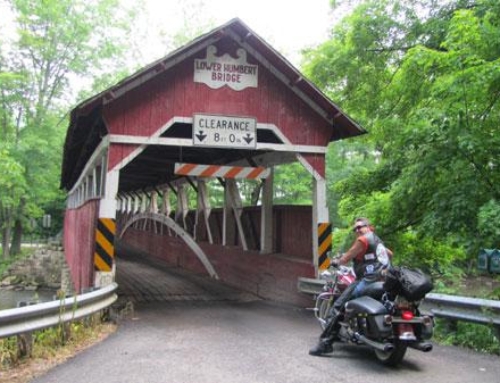“They were driven from the lands on which they had settled and on April 18, 1752, Andrew Montour was commissioned by the governor to settle and reside upon these Indian lands, the Indians on July 2, 1750, having petitioned for such occupation, and arrangements having been made with them for such occupation at a place considered most central, to see that the lands were not settled upon and to warn off any who had presumed to settle there. He was also to report the names of any who did settle there that they might be prosecuted. He chose to settle on a stream which to this day bears his name, Montour’s run flowing through Tyrone Township. “
History of Perry County
H.H. Hain 1922
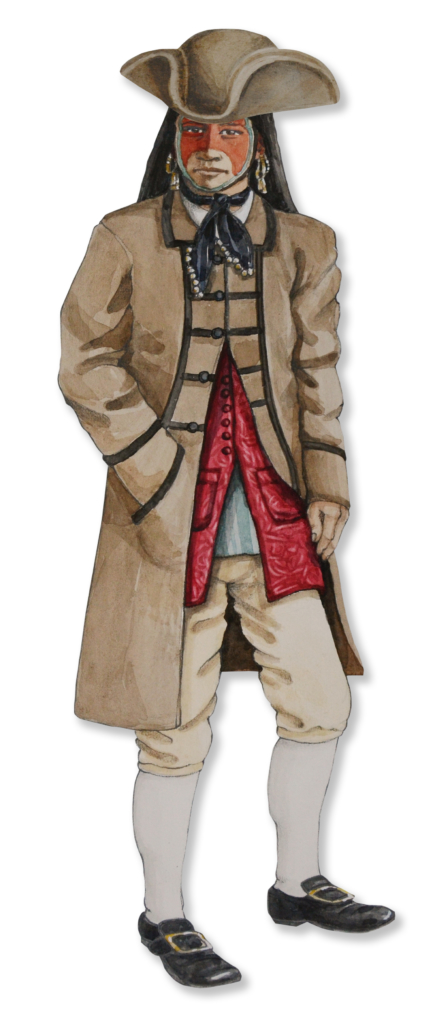
On my part, all of this was a chance discovery while doing research on his mother, Madame Montour.
Born Isabel Couc in New France (Canada) in 1667 to Pierre Couc, a Frenchman, and Marie Miteoamegoukoué of the Algonquin Nation, Madame Montour was exposed at an early age to Native American and European languages on what, at that time, was a very wild frontier. She had a gift for languages and became fluent in French, German, English, Iroquois and Algonquian and, as early as 1711, she was in demand as an interpreter and negotiator between American Indians and settlers. She became invaluable to both the governors of New York and Pennsylvania.
In 1727, she settled at the mouth of Loyalsock Creek near present-day Montoursville, Pa. with her Iroquois husband, Carondowana, and her two children, Andrew and Margaret. It was there that she founded the village of Otstonwakin.
The exact location of the village was a mystery until 2009 when Franklin & Marshall College anthropologist Mary Ann Levine discovered the site. Her archaeological excavation and subsequent lectures are what launched me on a study of the Montour’s and that time period.
In addition to Internet research and drawing on local sources, one book, in particular, became invaluable for insights not only into the history of the Montour family but the times in which they lived — “Madame Montour and The Fur Trade” by Simone Vincens. Originally published in French as “Madame Montour et son temps” (1979), it was not translated into English until 2011. The author draws on archives from Quebec, Montreal, Ottawa, and France to fill in the many gaps in the life of Madame Montour, and brings to life the collision and cultural complexities of contact between Native Americans and white settlers during the 17th and 18th centuries.
Andrew Montour inherited his mother’s gift for languages and basically took over the family business of interpreting when Madame Montour lost much of her influence through age and the loss of her husband. Having heritage in both the Anglo and American Indian worlds, he traveled back and forth across the frontier on mission after mission. He was a member of the Iroquois Grand Council and was employed by the governors of New York, Pennsylvania, and Virginia. His travels put him at all of the important American Indian negotiations of that time period and in the presence of colonial figures such as Benjamin Franklin and George Washington.
The Moravian missionary Count Zinzendorf, on a trip to Madame Montour’s village of Otstonwakin, described Andrew Montour as a young man: “Andrew’s cast of countenance is decidedly European and had not his face been encircled with a broadband of paint applied with bear fat, I would certainly have taken him for one. He wore a broadcloth coat, a scarlet damaskeens lapped-waistcoat, breeches, over which his shirt hung , a black Cordovan neckerchief, decked with silver bugles, shoes, and stockings, and a hat. His ears were hung with pendants of brass and other wires plaited together like the handle of a basket. He was very cordial, but on my addressing him in French, he, to my surprise addressed me in English.”
The above quote is well known locally and is contained in the “History of Lycoming County” by John F. Meginness. but what about the missing pieces of Andrew Montour ‘s life not well known in Lycoming County?
“In Madame Montour and the Fur Trade,” the author describes a land grant given to Andrew by the governor of Pennsylvania, as petitioned by the American Indians, of 143 acres and a stone house. When he took up residence there he became the first official settler of Perry County and with the authority given to him by the governor on the as-yet-Indian lands to kick white squatters off he essentially became the first “sheriff”. This also put him along the Allegheny Trail which was about to become the preferred route to western Pennsylvania and the Ohio Valley, the original trail along the Susquehanna River and by Otstonwakin being forsaken for better terrain and more direct route west. Andrew was now positioned strategically to keep an eye on it all.
Madame Montour, even at the advanced age of 85, accompanied Andrew to the new place along Sherman’s Creek and this, according to Vincens’ book, is where she dies. When I read those words I said, “Wait a minute!” Most accounts have her dying in Western Pennsylvania at another land grant given to Andrew. And other accounts report she died at Fort Augusta in Sunbury, PA. Sherman’s Creek was news to me.
At this point, I knew nothing about Perry County’s history except what I read in “Madame Montour and the Fur Trade.” I didn’t even know exactly where Sherman’s Creek was located. The book had a rough drawing of the area so I used that map and the Howard Higbie Stream Map of Pennsylvania to locate Sherman’s Creek. And while I was following it west using the largest magnifying glass I own (the first casualty of getting older) guess what I found? It was another creek flowing into it called Montour’s Creek!
What were the odds that the land grant might be at the meeting of these two creeks? There was only one way to find out — I had to go there.
On a Saturday morning in June 2013, I picked up a navigator of sorts, my friend and fellow digger, Joel Buck, and headed down Route 15. From the maps, we knew our goal was close to the town of Landisburg on Route 233, about 20 miles from Route 15 and northwest of Harrisburg. That’s all we knew for sure.
Sherman’s Creek turned out to be a fair body of water, deep enough to be navigable in the spring but not in the summer months. We located what turned out to be Montour’s Creek and while not identified by signage it was confirmed by locals. It was a small steam about four or five feet across and barely a trickle of water. The confluence of it with Sherman’s Creek was on private land and we could see that it was basically a farmer’s field.
There was an absence of historical markers at the site so we decided to do some detective work. We interviewed locals at some busy Saturday yard sales to see if they knew why the small stream was named for a Montour. No one knew anything. One of them told us to check with the historical society just outside of town at the even-smaller hamlet of Dromgold. This turned out to be a very good piece of advice.
I thought we had a better chance of meeting Andrew Montour himself than finding anyone at the historical society on a Saturday morning. I was just going to leave a card and note and call them later. What we found, however, was a very lively yard/book sale benefitting the Historical Society of Perry County. As luck would have it, we found Thomas Prescott of the society at the first booth and started asking questions.
Was the meeting of Sherman’s Creek and Montour’s Creek the site of the famous land grant? “Absolutely,” he said. In fact, they had an ongoing archaeological dig at the site but as yet had not found evidence of Andrew’s home. They had been pulled away from the site for some rescue archaeology but plan to restart the dig as soon as possible.
All of this surprised me. Here we had what amounted to the common knowledge of the Montours and their homestead by this historian, and Perry County in general but less than 100 miles away, in Lycoming County, we were basically in the dark about it.
As we headed home, Joel and I talked excitedly about the day and the detective work that brought us to Perry County. We knew that the next step would be further research. One source recommended by the folks at the historical society in Dromgold was, “The History of Perry County” by H.H. Hain. And that’s where the pieces began falling into place. Now we had multiple sources telling the same story.
The mission of historians and archaeologists is always about putting the pieces of the past together and bringing those findings to light. How important they depend on your perspective. What I find vital and engrossing may be of little interest to others, but the fact remains that we are all rooted in the past and we are all products of those times.
Andrew Montour was an important figure on the American frontier. His role cannot be diminished because of his mixed Native American and European blood. The fact that he had a foot in both worlds made him one of the colonial period’s most complex, but effective, characters. Andrew was an interpreter, negotiator, spokesman, and warrior. If it were not for his courage at a very crucial and dangerous time, the history of an entire continent might be very different. The fact that he was given multiple tracts of land across Pennsylvania for his services is proof of his worth to his contemporaries and one of those tracts would eventually become Montoursville.
– Tank Baird is the vice president of Northcentral PA Chapter 8, Society for Pennsylvania Archaeology.


